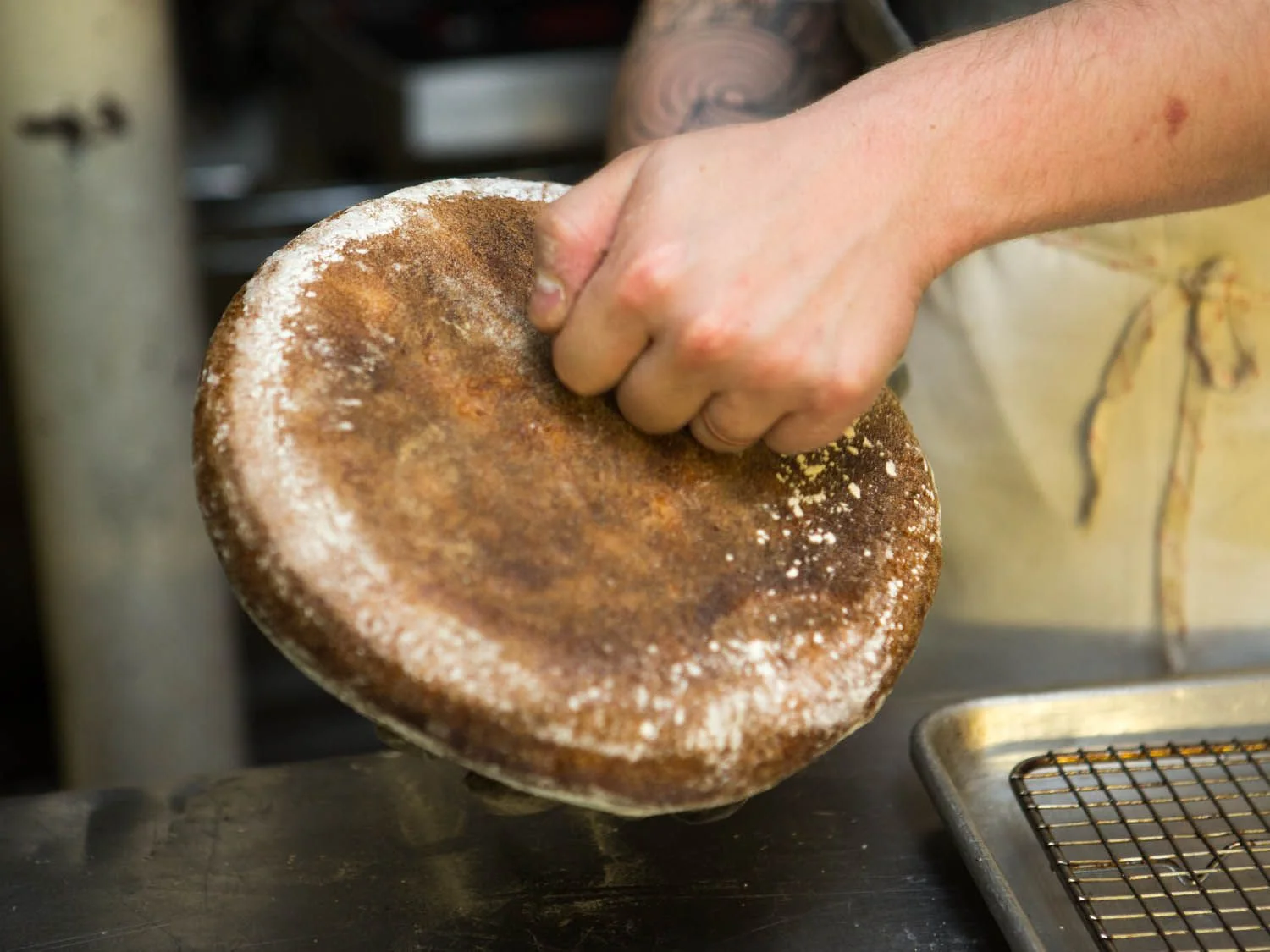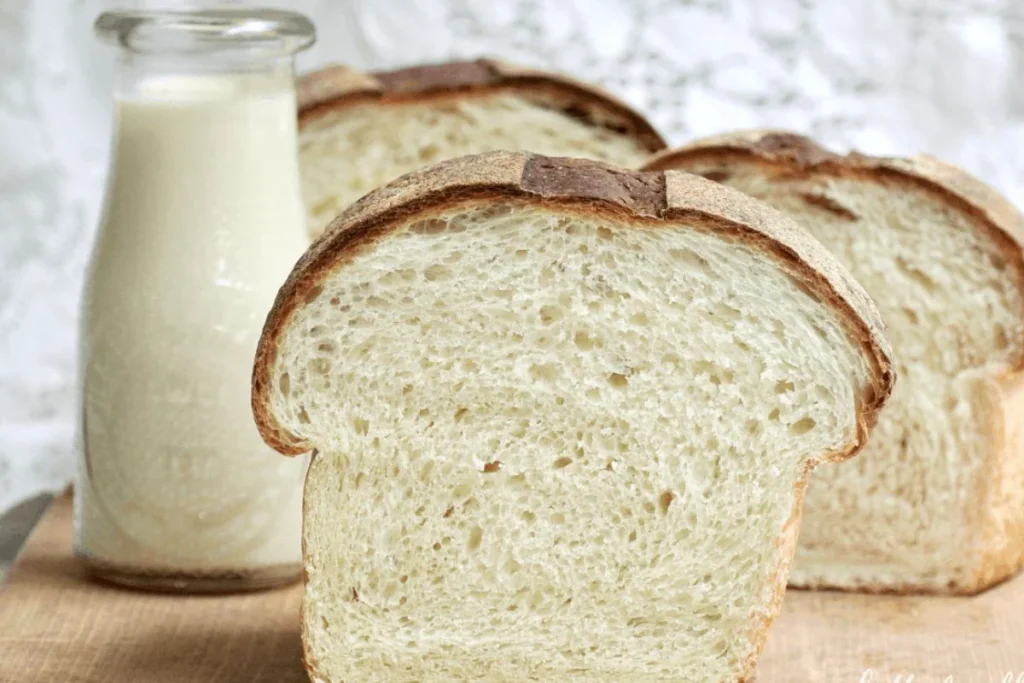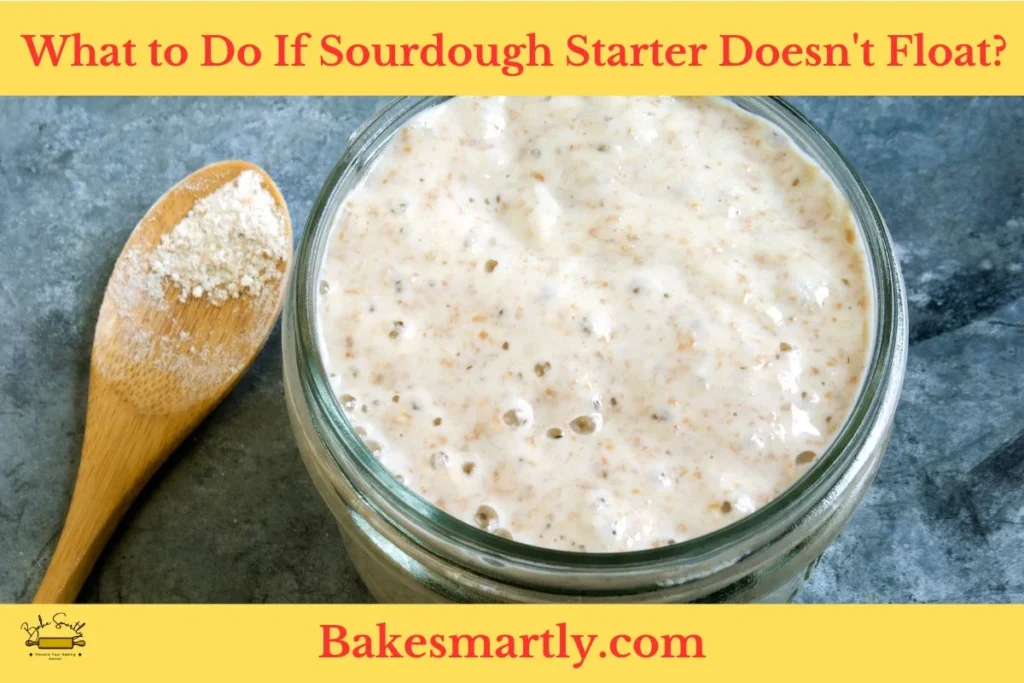
How to Prevent Sourdough Bread From Burning on the Bottom
Are you tired of biting into a delicious slice of sourdough bread only to discover that the bottom is burnt to a crisp? If so, you’re not alone. Burnt bottoms are a common problem faced by many home bakers when it comes to sourdough bread.
But don’t worry, there are a few simple tricks you can use to prevent this from happening. As a seasoned bread baker myself, I’ve had my fair share of burnt bottoms and have learned through trial and error how to avoid them.
In this article, I’ll be sharing my top tips and tricks for preventing burnt bottoms in your sourdough bread. From adjusting your oven temperature to using the right baking vessel, you’ll be able to bake perfect loaves of sourdough bread every time. So, let’s get started!
Table of Contents
ToggleWhy Does My Sourdough Bread Burn on Bottom? | 4 Main Causes
Before we dive into the prevention methods, it’s crucial to understand the reasons behind burnt bottoms in sourdough bread. By identifying the culprits, we can take appropriate measures to overcome these challenges.
The following factors contribute to burnt bottoms:
1. Uneven Oven Temperature
Uneven oven temperatures can lead to uneven baking. If the heat distribution in your oven is not consistent, the bottom of the sourdough bread may be exposed to higher temperatures than the top.
This imbalance can result in the bottom getting excessively browned or even burnt. To address this issue, invest in an oven thermometer to ensure accurate temperature readings and consider rotating your bread halfway through the baking process.
2. Incorrect Oven Rack Placement
The position of your sourdough bread within the oven matters. Placing the bread too close to the bottom heating element can cause excessive heat exposure to the lower part of the loaf.
To remedy this, position the oven rack in the middle or upper third of the oven. This adjustment helps create a more even distribution of heat around the bread, preventing the bottom from burning.
3. Dark Bakeware
The type of bakeware used plays a significant role in how the heat is absorbed and transferred to the bread. Dark-colored pans or baking sheets absorb more heat than lighter ones, potentially causing the bottom of the sourdough bread to brown too quickly.
Consider using light-colored or reflective bakeware to promote even browning across the entire loaf.
4. Insufficient Insulation
Inadequate insulation of the baking vessel can also contribute to burning on the bottom. If using a Dutch oven or a similar covered vessel, ensure that it is properly preheated.
Additionally, placing a layer of parchment paper at the bottom of the vessel can act as a buffer, preventing direct contact between the bread and the hot surface.

10 Tips and Techniques to Prevent Sourdough Bread From Burning on the Bottom
Now that we understand the common causes of burnt bottoms in sourdough bread, let’s explore effective strategies to prevent this issue and achieve perfectly baked loaves:
1. Proper Preheating
Achieving an even bake starts with proper preheating. Make sure your oven is fully preheated before placing your sourdough bread inside. This ensures that the heat is evenly distributed, reducing the risk of hot spots that can lead to uneven browning and burning on the bottom.
To ensure an accurate preheat, invest in an oven thermometer. This simple tool can make a significant difference in your baking precision, allowing you to adjust the temperature as needed for consistent results.
2. Quality Bakeware
The type of bakeware you use plays a crucial role in the baking process. Opt for quality baking sheets or stone, and avoid thin or dark pans that may absorb too much heat, leading to uneven baking. A stone or cast-iron surface can provide a more consistent temperature and prevent the bottom of your sourdough bread from burning.
Additionally, consider using a parchment paper or silicone baking mat to create a barrier between the bread and the baking surface. This prevents direct contact, minimizing the risk of burning while also making it easier to transfer the loaf in and out of the oven.
4. Adjust Oven Rack Position
Oven rack placement can influence the heat distribution and impact the overall baking process. To prevent the bottom of your sourdough bread from burning, position the oven rack in the middle or slightly higher position. This helps ensure that the heat circulates evenly around the loaf, reducing the chances of excessive browning on the bottom.
Experiment with rack placement based on your oven’s specific characteristics and monitor the results to find the optimal position for achieving a perfectly baked sourdough crust.
5. Use a Dutch Oven
One effective method to prevent burning on the bottom is baking your sourdough bread in a Dutch oven. This enclosed cooking environment traps steam, creating a humid atmosphere that promotes a crispy crust without burning the bottom. Preheat the Dutch oven along with the oven, and carefully transfer the shaped dough into the preheated pot for baking.
Remember to use parchment paper to lift the dough into the Dutch oven easily and reduce the risk of sticking or burning on the bottom.
6. Steam Injection
Introducing steam during the initial stages of baking can significantly impact the crust development. Steam prevents the surface of the dough from drying out too quickly, allowing for proper expansion and crust formation without burning. Use a spray bottle or place a pan of hot water in the oven to create steam during the first 10-15 minutes of baking.
This technique is particularly beneficial when baking without a Dutch oven, as it mimics the humid environment and helps achieve a beautifully browned crust without risking the bottom burning.
7. Optimal Baking Time
Timing is crucial when baking sourdough bread. Overextending the baking time can lead to excessive browning and burning on the bottom. Follow your recipe’s recommended baking time, but also pay attention to visual cues. A golden-brown top, crisp crust, and a hollow sound when tapped on the bottom are indicators of a well-baked loaf.
Invest in an instant-read thermometer to check the internal temperature of your bread. The ideal temperature for fully baked sourdough is around 200°F (93°C).
8. Sourdough Bread Rotation
To ensure even baking and prevent burning on one side, rotate your sourdough bread halfway through the baking process. Turn the baking sheet or Dutch oven 180 degrees to distribute the heat more uniformly. This simple action can make a significant difference in achieving an evenly browned crust and avoiding burnt spots on the bottom.
Keep in mind that some ovens have uneven heat distribution, so rotating the bread helps compensate for any discrepancies.
9. Monitor Oven Temperature
Oven temperatures can fluctuate, affecting the overall baking process. Regularly monitor the oven temperature using a reliable thermometer to ensure it stays consistent throughout the baking duration. Sudden spikes or drops in temperature can lead to uneven browning and potentially cause the bottom of your sourdough bread to burn.
Calibrate your oven periodically to maintain accuracy, and make adjustments as needed to achieve the desired results.
10. Use a Baking Stone
Baking stones are excellent heat conductors that help evenly distribute heat, reducing the likelihood of burning on the bottom. Place the baking stone on the middle or lower oven rack and preheat it along with the oven. Transfer your shaped sourdough dough onto the hot stone for baking.
The stone absorbs excess moisture, promoting a crispy crust, while its even heat distribution minimizes the risk of burning on the bottom. Always use parchment paper to facilitate easy transfer.

How to Fix Sourdough Bread Burnt Bottom in 3 Easy Methods
If you find yourself with a burnt bottom on your sourdough bread, there are a few corrective measures you can take to salvage the situation and still enjoy a delicious loaf.
Here are three easy methods to fix a sourdough bread burnt bottom:
- Trimming and Slicing: One straightforward solution is to trim away the burnt portion of the crust. Using a sharp serrated knife, carefully cut off the burnt bottom, ensuring you remove just the affected outer layer. This method allows you to salvage the remaining perfectly baked interior of the bread. Slice the bread, and you’ll have an appealing loaf with a fresh, unburnt surface.
- Moisture Revival: If only the bottom layer of your sourdough is burnt, introducing moisture back into the bread can help soften and revitalize it. Wrap the burnt loaf in a damp kitchen towel or paper towel, and then place it in a preheated oven at a low temperature (around 300°F or 150°C) for 10-15 minutes. The moisture will permeate the bread, mitigating the burnt flavor and improving the texture.
- Reversal Toasting: Another method involves lightly toasting the burnt side of the sourdough. Use a toaster or a hot skillet to gently toast the burnt bottom. Keep a close eye on the process to prevent further burning, and rotate the bread to ensure even toasting. This method can help balance out the flavors and provide a pleasant contrast between the crispy exterior and the softer interior.
Remember, each method may have varying degrees of success depending on the severity of the burning. Choose the method that best suits your situation, and don’t hesitate to combine techniques for optimal results.
While these methods won’t erase the burnt experience entirely, they offer practical ways to save your sourdough bread and make it enjoyable despite the initial setback.
Frequently Asked Questions (FAQS)
Why does the bottom of my sourdough bread burn even when i follow the recipe instructions?
Baking can be influenced by various factors, including oven temperature accuracy, differences in oven models, and the type of baking pan used. These variations may cause the bottom of your sourdough bread to burn, even if you follow the recipe instructions precisely. It’s essential to experiment, make adjustments, and find the perfect balance that works with your specific baking environment.
Can I use a glass baking dish to prevent burnt bottoms?
Glass baking dishes are not recommended for sourdough bread baking, as they tend to retain and radiate heat differently compared to metal pans. This can result in uneven baking and potentially burnt bottoms. Stick to light-colored metal baking pans for the best results.
Is it better to bake sourdough bread on a baking stone or directly on the oven rack?
While baking directly on the oven rack can create a beautiful crust, it also increases the chances of burnt bottoms. Using a baking stone or a baking sheet helps provide a buffer and promotes more even heat distribution, reducing the risk of burning the bottom of the bread.
Can I prevent burnt bottoms by reducing the baking time?
Reducing the baking time alone may not necessarily prevent burnt bottoms. It’s important to consider other factors such as oven temperature, heat distribution, and the type of baking pan used. Adjusting the baking time along with these factors can help achieve better results and prevent burnt bottoms.
What can I do if my sourdough bread still has burnt bottoms?
If you’re consistently experiencing burnt bottoms despite trying various prevention techniques, consider seeking professional advice. Consult with experienced bakers or join online baking communities to troubleshoot and gain insights into specific challenges you might be facing.
How to Prevent Bottom of Sourdough From Burning | Conclusion
Preventing burnt bottoms in sourdough bread requires attention to detail and a willingness to experiment with various techniques. By understanding the factors that contribute to burnt bottoms and implementing the tips provided in this article, you can significantly improve your sourdough baking results.
Remember to choose light-colored baking pans, adjust the oven temperature, utilize baking sheets or parchment paper, and monitor the baking time closely. With practice and perseverance, you’ll be able to achieve perfectly baked sourdough loaves every time.
Lindsey Mackenzie
About me
Hi there! I’m Lindsey Mackenzie, the founder of Bake Smartly. Baking has been my passion since childhood, growing up in my father’s bakery. With Bake Smartly, I’m excited to share my love for all things sweet and savory. Join me on this delicious journey as we whip up scrumptious treats and sprinkle joy into every bite!






